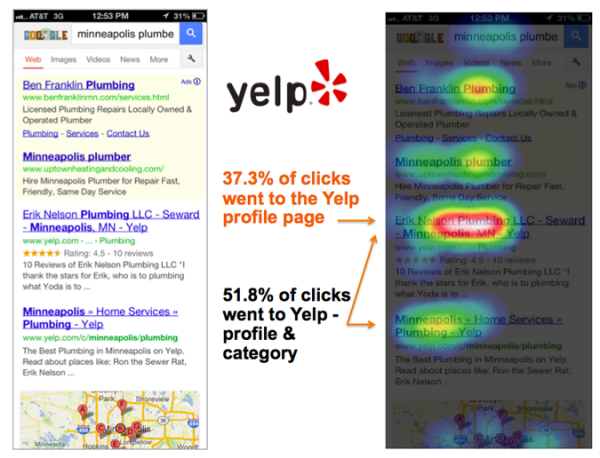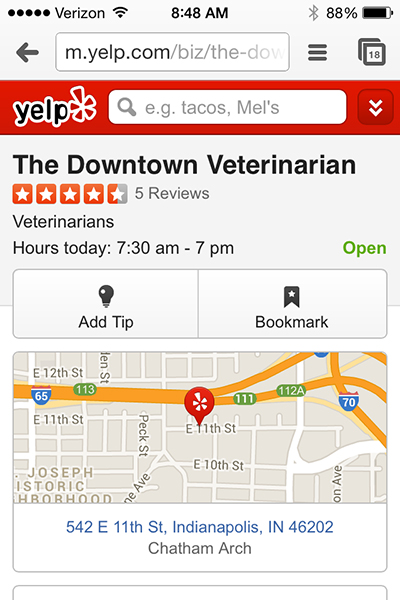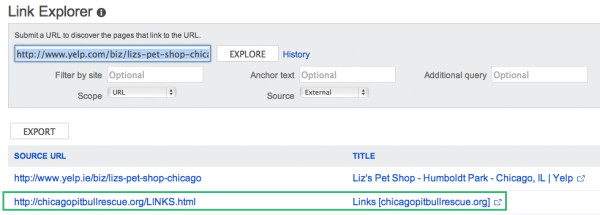Why “Barnacle SEO” Is Making A Big Comeback In Local
Although I’d heard of “barnacle SEO” as a tactic at some of the early SEO conference networking events, the first real proponent of it in local search was Will Scott. I want to say that Will originally published this post on the now-defunct Local Search News in early 2008; but alas, the original has been […]
Although I’d heard of “barnacle SEO” as a tactic at some of the early SEO conference networking events, the first real proponent of it in local search was Will Scott. I want to say that Will originally published this post on the now-defunct Local Search News in early 2008; but alas, the original has been lost to the silicon sands of time.
Will creatively defines the concept of barnacle SEO as follows:
Attaching oneself to a large fixed object and waiting for the customers to float by in the current.
Directly applied to local search, this means optimizing your profiles or business pages on a well-trusted, high-ranking directory and working to promote those profiles instead of — or in tandem with — your own website.
Recent Developments
In both the formal Q&A and the informal roundtables at our recent Local U Advanced event in Philadelphia, barnacle SEO was a hot topic. Attendees were anxious to hear about what we were seeing in our day-to-day SERP analysis.
Back when Will first promoted the barnacle SEO concept, I found it to be an intriguing intellectual exercise and a tremendous deliverable for low-budget clients — but without a ton of practical value for most local businesses that were served by agencies.
In those days, 7-packs (actually, 10-packs) dominated the SERPs for Local Intent keywords. Your Google Local Business Listing was what mattered for above-the-fold visibility, not your Yelp profile or Superpages.com listing.
Fast forward to 2013. In the aftermath of Panda, Penguin, Hummingbird and the tsunami of mobile search, barnacle SEO should be not only an exercise, but the mainstay of any local search campaign.
Last year, I documented a qualitative Hummingbird-related shift in the local SERPs that seemed to favor strongly-branded directories like Yelp and Angie’s List. Will mentioned that he’d seen this shift with his clients even earlier than last fall. Aaron Weiche has also documented Yelp’s prominence in mobile search queries for the last 12 months as well.
So, aside from the obvious link equity that these large directories and review sites have built up over the years, what would cause Google to increasingly favor them in recent months? There are actually a number of algorithmic factors that have affected SERPs in all disciplines that can be used to explain the changes.
Local Directory Advantages
Brand Equity: Most of us remember Eric Schmidt’s famous 2008 dictum that “brands are how you sort out the cesspool” of the internet, and Google’s algorithm has gotten better and better at filtering that “cesspool,” despite plenty of well-reasoned arguments against moving in that direction.
With Panda and Penguin delivering a one-two punch to low-quality content linked to by low-quality sites, we should have expected that well-known, content-driven directories would indeed rise to the top.
Better Answers: For years, there’s been a disconnect between the design of and content provided by the typical small business website and what searchers (and therefore search engines) actually want. In the restaurant vertical, it’s menus, reviews, photos, and location. In other industries, it might be pricing information, photo galleries or amenities offered.
Many times, strong industry directories provide this information where local business websites do not, meaning searchers will get their desired answers faster from directory websites — especially when nearly two-thirds of those searches are on mobile devices (more on this below).
Better Experience On Mobile: At the recent International Franchise Association convention in New Orleans, attendees in my session wanted to know where to start when it came to optimizing their store locators for mobile searchers.
My answer was to start with the designs of local pages on Yelp and other large directories, which have likely been A/B and multivariate-tested with far more traffic than a small business will ever get in its lifetime.
These pages tend to load extremely quickly, minimize large images and provide contact information and key decision-making criteria (like the information mentioned above) right at the top of the page. Again, if searchers are able to get their answers faster from these kinds of sites, it stands to reason that Google would want to rank them higher for relevant local queries.
How To Barnacle For Maximum Impact
Okay, so hopefully I’ve now convinced you of the value of the barnacle strategy. What’s next? How do you execute?
1. Do Your Research & Prioritize Your “Fixed Objects”
The first step is to see which directories rank consistently well in your industry and in your geographic area. Perform a dozen or so searches on primary category keywords and track which directories tend to rank highly across all of these terms, paying particular attention to the ones that rank above the 7-pack. These are the sites where you’ll want to spend the most time building out your profiles.
2. Build Great Profiles
The first priority is obviously to claim your listings at these high-ranking sites and to make sure your basic information — business name, address, phone number and website — is correct, along with hours of operation and a contact email address.
Beyond that, spend time taking and uploading photos that really show off your business. These are a major conversion point for searchers, as mentioned above. Finally, take the time to draft a compelling description of the services or goods your business offers. You should worry less about keywords and more about language that will draw prospective customers in.
3. Links, Links, Links
And of course, if your profile is to rank well in the SERPs (and not just a generic category page), it’s going to need some external links pointing to it. Make sure you’re linking to it from your own website (especially your contact or location page), but also consider sending links from other locally-oriented websites like charities, chambers of commerce and local school districts to these profiles in lieu of (or in addition to) linking to your own website.
My personal opinion is that you can be a little more aggressive with your link building strategy to these third-party profiles than you would be to your own website, as gray-hat links are less likely to stand out in a corpus of hundreds of thousands (or even millions) of links the way that they do among the handful of links that a typical small business website has earned.
Conclusion
Well, there you have it. As long as Google continues to reward brand signals, rich profile content and optimized mobile experiences, we can expect to see strong directories continue to rise to the top of the SERPs.
Now is the time to invest in optimizing your primary local search profiles to convert visitors and build a strong backlink profile — as the search traffic they receive will continue to increase. If content directories are the big ships, it’s time to barnacle on.
Opinions expressed in this article are those of the guest author and not necessarily Search Engine Land. Staff authors are listed here.
Related stories
New on Search Engine Land




